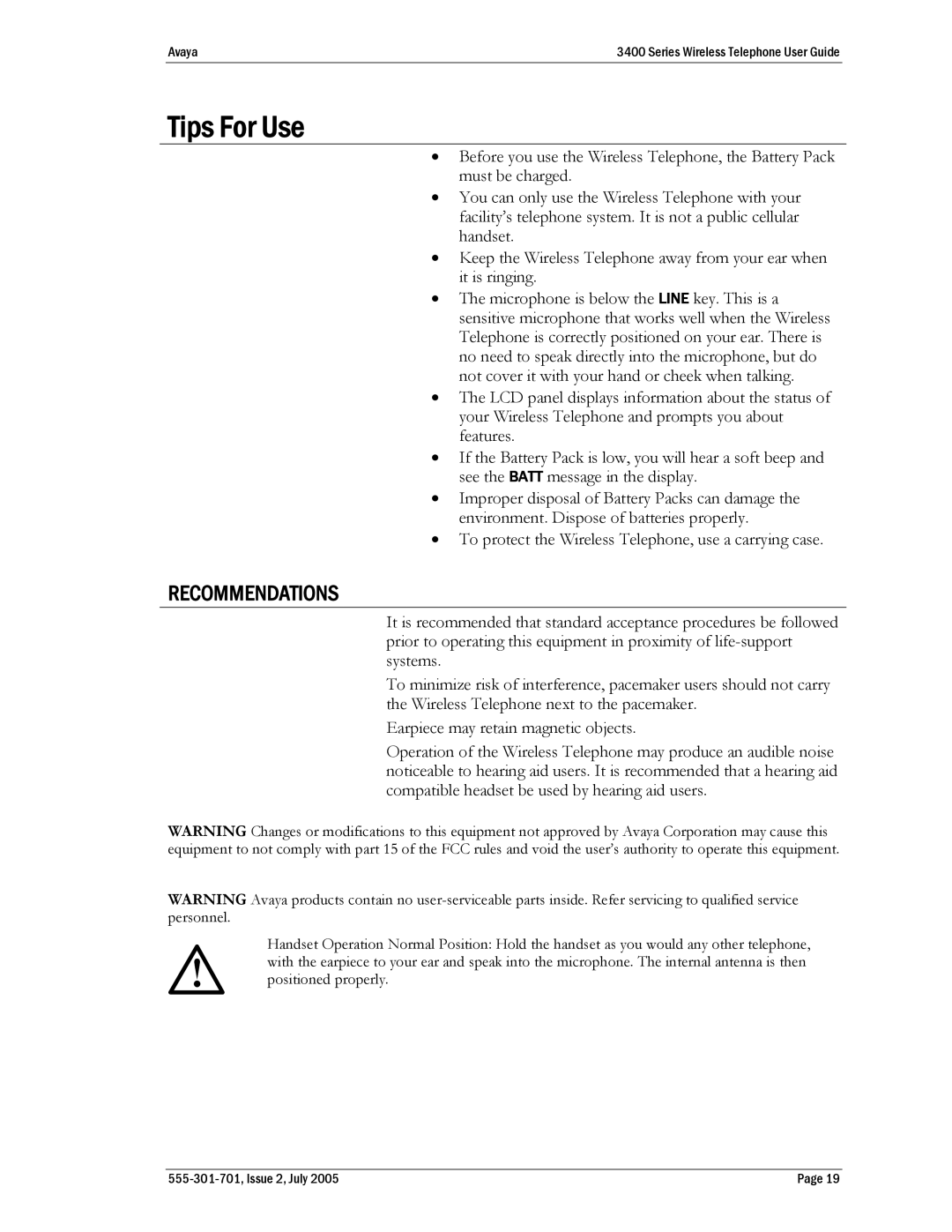
Avaya | 3400 Series Wireless Telephone User Guide |
Tips For Use
•Before you use the Wireless Telephone, the Battery Pack must be charged.
•You can only use the Wireless Telephone with your facility’s telephone system. It is not a public cellular handset.
•Keep the Wireless Telephone away from your ear when it is ringing.
•The microphone is below the LINE key. This is a sensitive microphone that works well when the Wireless Telephone is correctly positioned on your ear. There is no need to speak directly into the microphone, but do not cover it with your hand or cheek when talking.
•The LCD panel displays information about the status of your Wireless Telephone and prompts you about features.
•If the Battery Pack is low, you will hear a soft beep and see the BATT message in the display.
•Improper disposal of Battery Packs can damage the environment. Dispose of batteries properly.
•To protect the Wireless Telephone, use a carrying case.
RECOMMENDATIONS
It is recommended that standard acceptance procedures be followed prior to operating this equipment in proximity of
To minimize risk of interference, pacemaker users should not carry the Wireless Telephone next to the pacemaker.
Earpiece may retain magnetic objects.
Operation of the Wireless Telephone may produce an audible noise noticeable to hearing aid users. It is recommended that a hearing aid compatible headset be used by hearing aid users.
WARNING Changes or modifications to this equipment not approved by Avaya Corporation may cause this equipment to not comply with part 15 of the FCC rules and void the user’s authority to operate this equipment.
WARNING Avaya products contain no
Handset Operation Normal Position: Hold the handset as you would any other telephone, with the earpiece to your ear and speak into the microphone. The internal antenna is then positioned properly.
| Page 19 |
